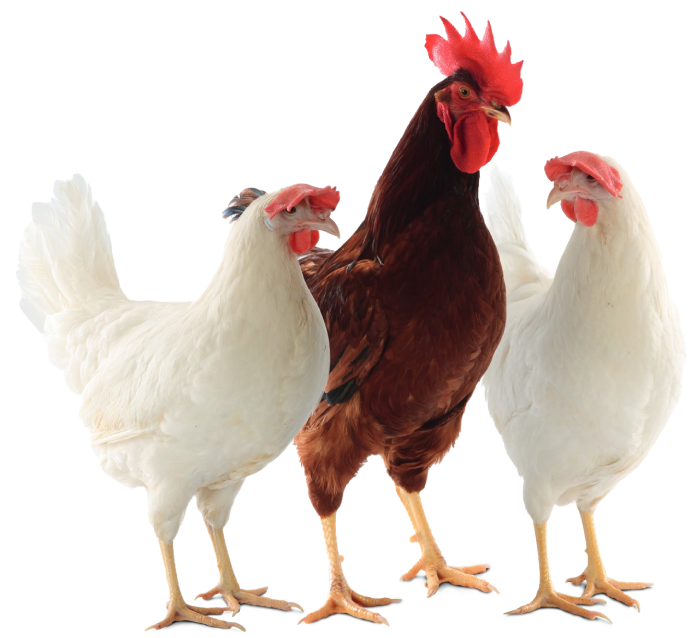» We cannot predict today when the next adjustment of performance standards will take place, but probably in 4-5 years from now. However, you can be sure, that the genetic work at LTZ will continue to create genetic progress. «

The performance standards for all Lohmann Layer strains have been used for more than 4 years now without any changes. However, in every generation the genetic potential is increasing through the selection of the best individuals as parents of the next pureline generation. Genetic progress is delivered to our customers with every new Grandparent and Parent stock generation and therefore realised on the commercial level. Additionally, an improved management and improved feeding technologies (for example new feed enzymes) in commercial and PS flocks, contribute to an increasing performance level. Since we do not change the performance standards with every generation, the genetic and environmental progress have been accumulated for four years now. The new performance standard levels have therefore been adjusted and were released at the end of 2015. In 2008, separate standards were introduced for the alternative housing systems, which will be continued in the current update. However, seven years later after having gained gained more experience with the performance profile of our birds under alternative systems, the relation of the standards between cages and alternative systems needed to be reviewed.
The major changes can be summarised in increased egg numbers for all standards that are based on:
1. Due to improvement in persistency, a higher increase at older ages
2. Extension of the cage standards from 90 to 95 weeks in one cycle
3. Alternative standards are still based on 85 weeks of age
4. Alternative standards have increased more due to smaller differences between cage and alternative housing
5. Slight reduction of egg size in alternative standards, especially at older ages
6. No change in body weight and feed intake
Improvement of persistency
Especially after 60 weeks of age, the laying performance of the hens has improved. This is the consequence of the top-ranking selection target of laying persistency with saleable shell quality. The increased number of saleable eggs from a longer production cycle of a flock gives an economic advantage to the egg producer. The cost for the pullet is covered a higher number of eggs, thereby reducing the costs of the pullet per egg. Under field conditions, more and more flocks are showing a longer production period and the length of the cage standards have therefore been prolonged from 90 to 95 weeks of age (without molting). In alternative management, it is still more difficult to keep the flocks as long as one does with cages. Thus, the standards for the alternative housing systems have not yet been prolonged. They are still based on up to 85 weeks of age. However, in future, with the next update of standards, we will also prolong the alternative standards to an older age.
New international performance standards for cages

New performance standards for alternative housing systems

As an example, please refer to the following table for a comparison of old standards with the new standards for LSL CLASSIC in cages as well as for alternative housing. The egg number at 72 weeks has increased in the cage standard by 2.6 eggs, but for the alternative standard, the egg number has increased by 3.9 eggs. As a result, the difference in egg numbers between cages and alternative housing has now been reduced from 7.0 to 4.3 eggs.
Table: Comparison of old and new standards for LSL CLASSIC in cage and alternative housing systems at 72 and 85 weeks

How to read the performance standards
The LTZ breeding standards for both cages and alternative housing systems are created in such a way, that the target values do not correspond to the maximum performance that can be reached. The maximum performance will only be achieved if perfect conditions for the birds are always provided. This is not realistic in real field conditions. Our standards are therefore based on average field conditions and should be realistic and reachable under average management and environmental conditions. The genetic potential of Lohmann Layers is much higher than the performance targets and is represented in the top performing flocks which can reach 20-30 eggs more than the standards. It is very clear, that under moderate climate conditions like in Europe, it is easier to achieve the targets than under hot climate conditions in which the birds are challenged by much higher disease pressure and more severe vaccination programs.
Feed Efficiency
There was no major change in the feed intake of the birds, so with nearly the same feed intake, more egg mass is produced which results in better efficiency. The better efficiency is not based on a lower feed intake, it is the result of a higher output. The balanced breeding strategy for better efficiency results in birds with a flexible feed intake and the ability to eat enough feed, i.e. if the feeding space and stocking density is adjusted to the needs of the birds. In alternative systems, the birds need to consume more feed as compared to those in cages due to a higher level of activity and consequently, the feed efficiency is not as good. Nevertheless, an improvement of feed e f f i c i e n c y has also been realised in alternative systems by means of a higher egg mass production.
Today, we cannot predict when the next adjustment of performance standards will take place, but probably in 4-5 years from now. However, you can be sure, that the genetic work in LTZ will continue to generate genetic progress. With investments in new breeding farms (Canada), new technologies (genomic selection) new equipment (enriched single cages in Germany) and continued testing of cross-bred birds under challenging field conditions in Russia, Spain and Columbia, the future of genetic progress is safeguarded and sustainable. The progress is not only based on economic important traits like laying rate and feed conversion, but also in improved shell quality and livability. After many generations of intense selection, the genetic parameters (heritability) are still showing a clear potential for further improvement. Due to careful management of the level of inbreeding, there are no negative signs like inbreeding depression or reduced variability. The biological limit of one egg per day is for sure reached during laying peak in high performing flocks, but longer laying sequences still give potential for improved persistency with improved shell quality. The testing period on the pureline birds was extended to over 100 weeks in one cycle. A combination of data captured from the purelines in single cages and family groups are complemented with improved genomic selection that will therefore continue to drive the genetic progress.
Dr. Schmutz






